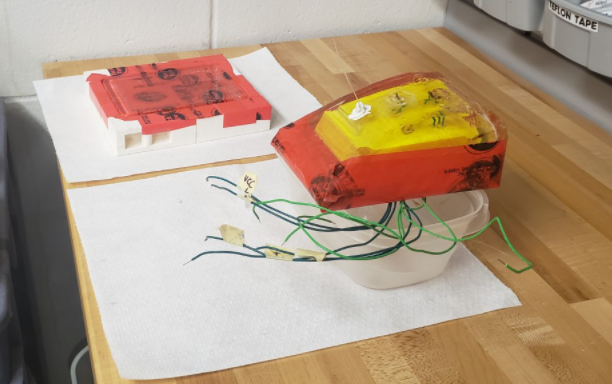
Members of team MATR had a restful spring break last week and are back to work this week getting ready for Prototype Inspection Day (PID), which will be held next Tuesday, March 22, 2022. The event will follow the same format as the PID that was held in the fall semester, where the team gave a series of 15 minute presentations to different UF faculty who were able to give detailed feedback on the design and project plans. With just over a month left until the Final Design Review (FDR), the team will be presenting a nearly fully implemented prototype to participating faculty. The prototype will consist of the epoxy device housing with most of the sensors fully potted in the epoxy and protruding from the housing where needed(salinity, pressure, temperature, and antenna), and a 3D printed box that will house the PCB and battery. Due to an issue with the 1st revision of the PCB, it will not be used in this iteration of the prototype, and instead sensors will be wired up to a breadboard to be connected with the microcontroller launchpad. the MCU will be programmed to take readings from each of the sensors, and display the values on a laptop screen for the audience to see and determine how well the design is working.
Beyond the live demonstration, the team will be conducting more ARGOS tests to report on how exactly sensor data will be sent to satellites, but unfortunately ARGOS will not be fully integrating with the MCU and sensors in time to present on Tuesday. GPS integration is also still in the works, and was put on hold due to questions about the GPS module antenna, that the team got answered by a researcher this week. After talking with the researcher, the team concluded that it would be best to make the block antenna work by potting it as close as possible to the top of the enclosure. Integration of the ARGOS system and the GPS module with the MCU are top priorities in the plans following PID, along with acquiring the final PCB and fully integrating and testing the entire device.